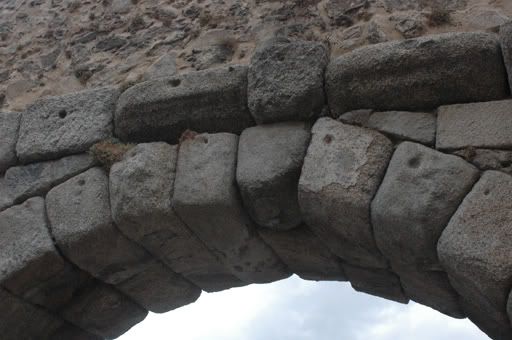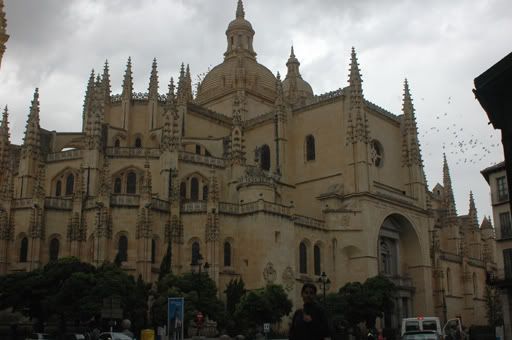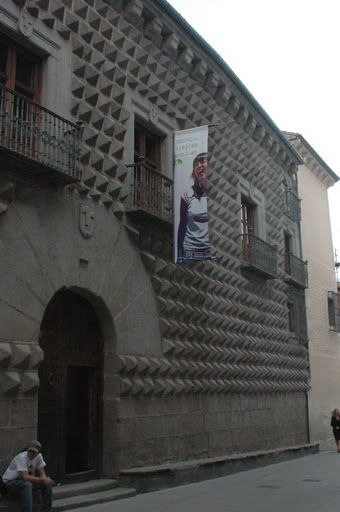There was not much to Segovia but it is a rather charming little town. The most emblematic of all the architectural structures to seen in Segovia is the aqueduct. The aqueduct was in all likelihood erected in the 1st century A.D. This most impressive work of engineering supplied water to the high lying parts of the town, at the time occupied by the Roman military headquarters and today the site of the Alcazar. From its source at the Fuenfria River some 14 km. away, to the point at which it enters the town, the aqueduct is in fact an underground channel capable of transporting up to 30 liters of water per second. The free standing arcade gracing its last kilometer features over 20,000 granite blocks that are held together without any kind of binding agent or mortar. Comprising of 120 pillars and 166 arches, it stands at 28 m tall. It is a marvelous site to see, and the fact that it still stands today is attributed to the Roman’s understanding of stone construction and the mastering of the arch.




Other building of note is the Cathedral, it is a massive yet harmonious late Gothic limestone structure that is known as the Cathedral of Segovia. Erected in 1525 to make amends for the damage done to it during the 12th century. We also went in to see the interior but the inside was just so dark that the images did not really work. It was rather bland any ways. The exterior was the best part of the Cathedral. Throughout this small town, there are 18 churches in all, ranging in size and grandeur.



We wanted to visit the Alcazar – a Castle Palace but it was closed, so that was a bit of a let down. On the other hand the walk through the town and then through the hillside was a great way to burn off a late lunch.

It was a day well spent seeing a different part of Spain that did not have the big city feel. We are looking forward to Lisbon, but not the 10 hour over night train ride (frankly we are a little sick of the train and would do almost anything to be on a plane or even a bus). Lisbon here we come!
Chunger the unemployed bum
4 comments:
Hey Chris and Rav,
I thought I recognized the statue of the dog suckling children from somewhere, I recall it being an important piece of Roman mythology. My good ol' Gardiners history of art textbook tells me that that the founders of Rome, Romulus and Remus were supposedly abandoned as infants and then suckled by a she-wolf. Doesn't seem to out of place with the big aqueduct being a focal point of the town! - Tara
Okay, well after that informative comment mine will not be as exciting. However it does make me want to travel with school on an Art History tour, as I think that you could learn a lot.
You know what I was just thinking....What ever happened to Mont St. Michael? You guys didn't go back to do it and I never remember reading why not.
Hmmm...let me know when you get a chance.
Nat
Hi Tara,
How are you doing? How is married life treating you? Thanks for the explanation on the statue, we were hoping someone out there would be able to tell us since we couldn't get any information from the Tourist Office. Hope all is well and tell Pete we said hello. Take care and we'll chat soon.
Hey Natter,
Always great to hear from you. Regarding travelling and art history, I'm sure it would be a definite eye opener and very educational. You should seriously think about doing it especially since you want to become a teacher. As for Mont St Michel, we never did end up going back. Figured it would be too painful for you to see it on the blog afterwards. There was just no time unfortunately to go all the way back. We decided when we go on our England-Ireland-Scotland trip, we'll try to fit it in then or maybe just the next time we go back to France!! :)
Post a Comment